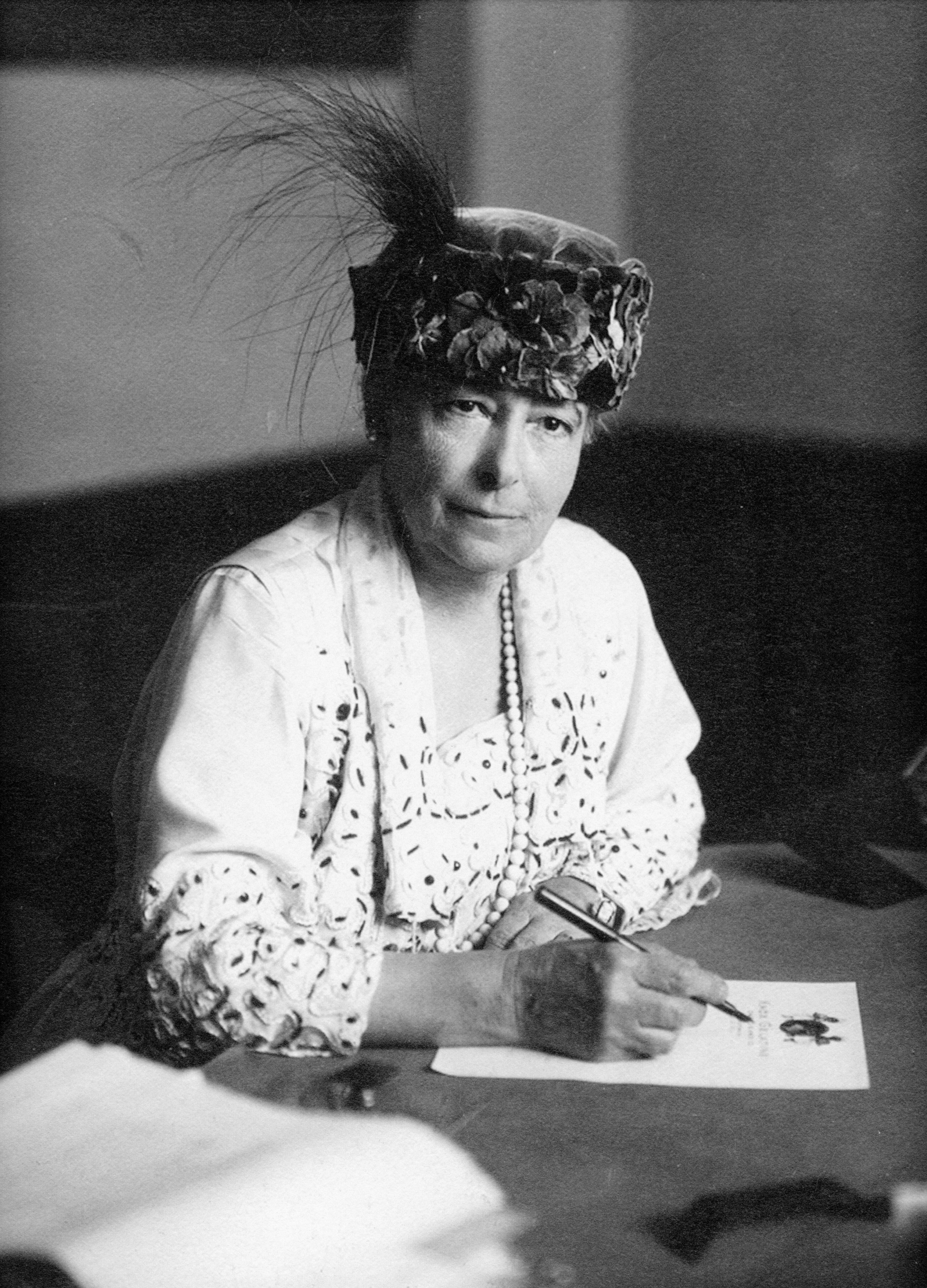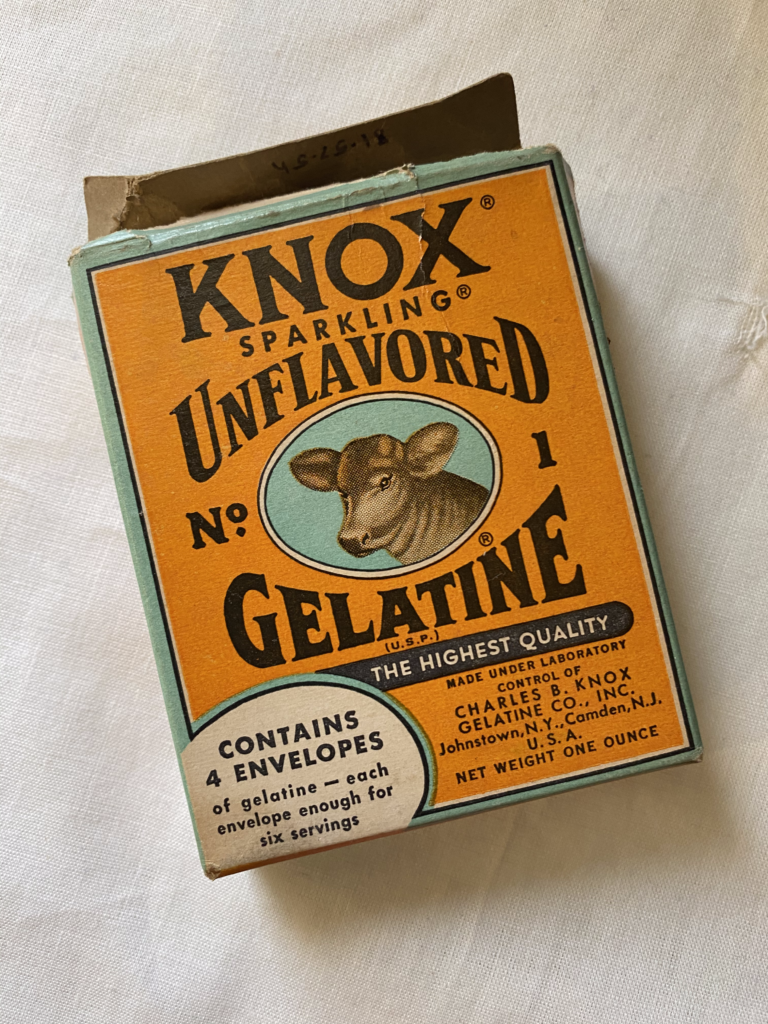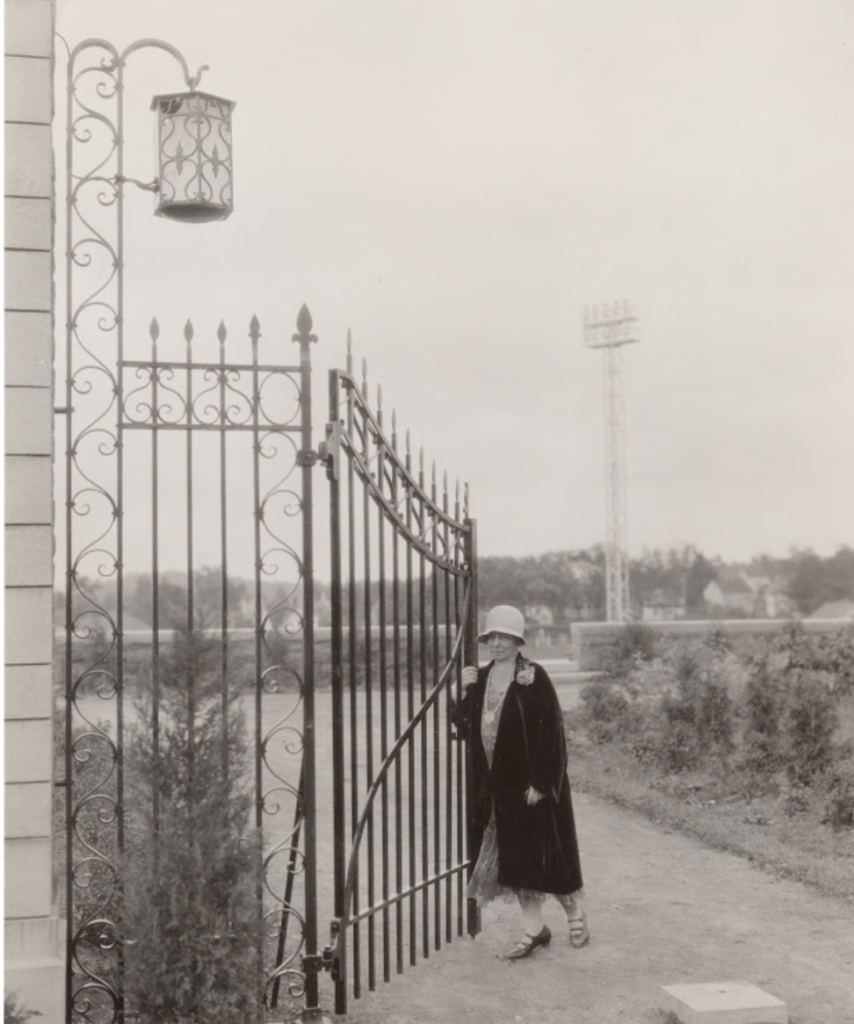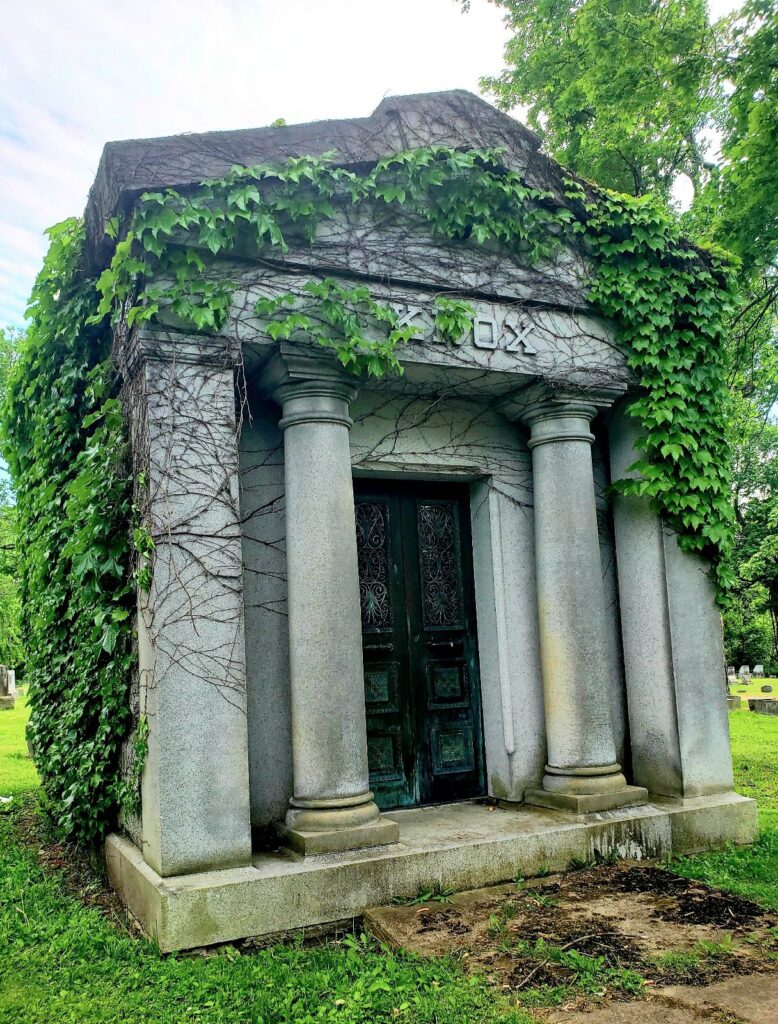This article was contributed to the FCHS blog by John Collins. Thank you for sharing your research with us, John!
People might know Karl Illva’s most famous work as the sculptor of the 107th Infantry Memorial in New York City’s Central Park that was commemorated in 1927[1], but do they know that four years earlier Karl Illva completed “The Thinking Doughboy” monument in front of the former Gloversville High School that was presented to the City of Gloversville on Sunday, November 11, 1923, almost 100 years ago? Well, I didn’t.
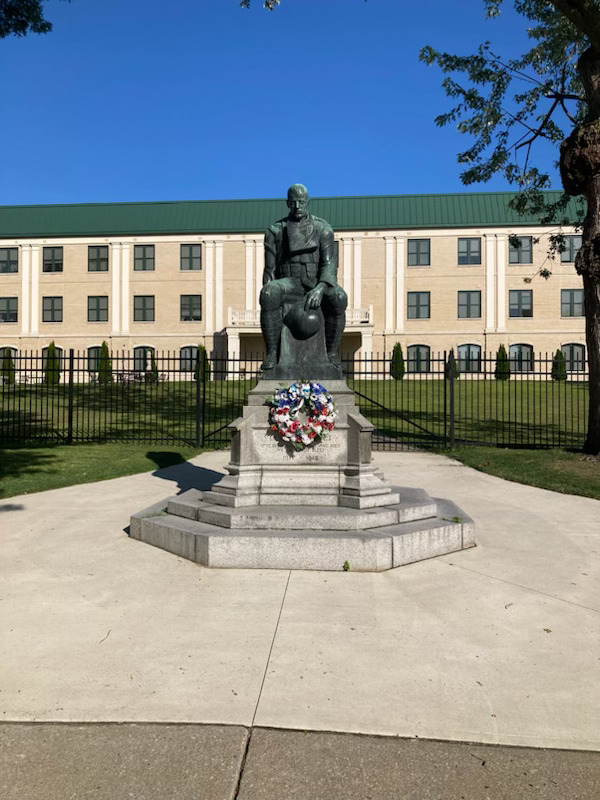
During World War One, Karl Illava served in the 27th Infantry Division.[2] At the start of active fighting, the 27th Infantry Division had a total of 991 officers and 27,114 enlisted men and shipped out for Europe on April 20, 1918.[3] By the War’s end on 11/11/1918, the 27th Infantry Division sadly sustained a total of 8,209 assorted casualties: 1,422 killed, 373 who later died of their injuries, and 6,414 wounded.[4]
The New York Times reported on July 1, 1923:
Karl Illava has just completed his war memorial for Gloversville, N.Y. The monument represents a colossal seated figure of a doughboy, bent in thought, contemplating his trophy, a German helmet, which dangles from his left hand. The right hand supports his Enfield [rifle].
The artist has tried to express quiet disillusionment, the eyes lowered, the forehead furrowed with pain, The treatment is monumental rather than realistic. The pedestal is Gothic and of dark granite. The monument is to be unveiled Sept 29th, the anniversary of the cracking of the Hindenburg system by the Twenty-seventh Division.[5] [The unveiling date was changed to Armistice Day 11/11/1923, now known as Veterans Day].
In Gloversville that Sunday, 11/11/1923, Mr. Illava was one of several dignitaries who spoke that afternoon in the auditorium of Gloversville High School and was reported the next day 11/12/1923 in The Morning Herald:
Then Karl Illava, the sculptor of the statue, spoke. A machine gunner in the 27th Division, he told of crossing over the ruins of a French town after the battle at Mt. Kemmel where he saw a U.S. doughboy sitting on some debris holding a German helmet, a symbol of victory. As he gazed on it, the sagging lines of fatigue were seen on his face. His expression was that of disillusionment not gratification of triumph. From that face Mr. Illava said, “I gained my inspiration to fashion a statue representing war as terrible. My work embodies that phase of conflict, which, though not spectacular, is none the less as meaningful as that of more heroic episodes.”[6]
Consequently, many veterans suffered from what is now known as Post Traumatic Stress Disorder, or PTSD. Five years later in 1928, German novelist Erich Marie Remarque completed All Quiet on the Western Front , which became a bestselling book in the United States, followed by an award winning film in August 1930 and may have been shown at The Glove Theater. It was sad to read the following passage where the central character is home on leave from the war and verbalizes symptoms of PTSD.
..I cannot get on with the people. My mother is the only one who asks no questions. Not so my father. He wants me to tell him about the front; he is curious in a way that I find stupid and distressing. I no longer have any real contact with him. There is nothing he likes to hear more than just hearing about it. I realize that he does not know that a man cannot talk about such things; I would do it willingly, but it is too dangerous for me to put these things into words. I am afraid they might become gigantic and I be no longer able to master them. What would become of us if everything that happens out there were quite clear to us? So I confine myself to telling him a few amusing things..
But he wants to know whether I have ever had a hand-to-hand fight. I say “No”, and get up and go out.[7]
Karl Illava was born Karl Morningstar in 1889. He grew up in New Jersey, and at the age of sixteen became a student of the renowned sculptor of Mount Rushmore, Gutzon Borglum. During this time, he took on the surname of his paternal grandfather.[8] He completed his military service in February 1919.[9] In 1920 Illava married Agatha Brown, with whom he had two daughters, Mary and Faith.[10] In 1943 he tried to enlist in World War Two but was turned down due to his age, so he joined the US Merchant Marines.[11] After his Merchant Marine service, Illava returned to teaching art and sculpture and had a prestigious career. Illava told his daughter that he wanted to present the “hell of war.”[12] Karl Illava died at the age of 65 on May 16, 1954 on the grounds of his home at the Edgewood School in Greenwich, Conn.[13]
[1](n.d.). One Hundred Seventh Infantry Memorial. Official Website of the New York City Department of Parks & Recreation. Retrieved August 25, 2023, from https://www.nycgovparks.org/parks/central-park/monuments/1136
[2] Raftery, P. (2017). Memorializing the “Splendid Little War” in Port Chester. The Westchester Historian, 93 number 2 (Summer), 12. Westchester County Historical Society
[3] (n.d.). 27th Infantry Division, World War One. New York State Military Museum and Veterans Research Center. Retrieved August 24, 2023, from https://museum.dmna.ny.gov
[4] 27th Infantry Division, World War One. New York State Military Museum and Veterans Research Center.
[5] (1923, July 1). Art News at Home and Abroad. The New York Times. https://www.nytimes.com
[6] (1923, November 12). Gold Star Mothers, Comrades of Martyr Soldiers as Well as Old War Vets Assist in Service. The Morning Herald (Gloversville, N.Y.), 3.
[7] Remarque, E. M. (1982). All Quiet on the Western Front (1st ed., p. 165). A Ballantine Book Published by The Random House Publishing Group.
[8] (n.d.). Spartanburg – Biography – Illava, Karl, 1919 – 2020. Spartanburg County Public Libraries. Retrieved August 24, 2023, from ArchivesSpace Public Interface
[9] Raftery, P. (2017). Memorializing the “Splendid Little War” in Port Chester. The Westchester Historian, 93 number 2 (Summer), 12. Westchester County Historical Society
[10] Raftery, Memorializing the “Splendid Little War” in Port Chester, 12.
[11] Ibid., 22-23
[12] (n.d.). Facts About Karl Illava. AskArt. Retrieved August 24, 2023, from https://askart.com
[13] (1954, May 20). Karl Illva, Sculptor of Memorials, Suffers Fatal Heart Attack at 65. Bronxville Review Press and Reporter, 21. https://news.hrvh.org



